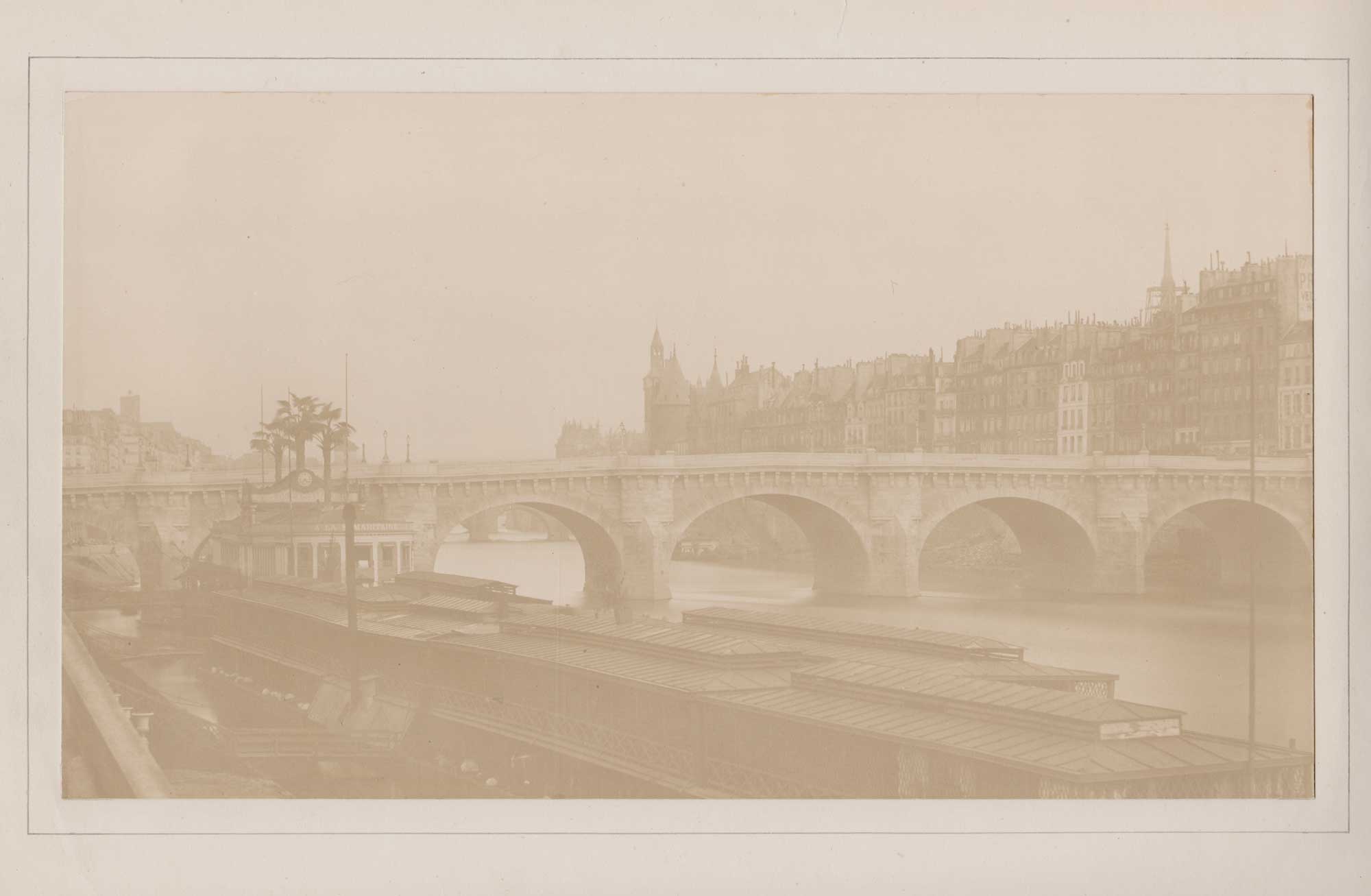
Paris | The Pont Neuf, Île de la Cité & Samaritaine Baths
On the Left bank of the Seine River in Paris, this view ca. 1853-55 shows the Pont Neuf bridge leading to Île de la Cité, the island in the middle of the river that was the birthplace of Paris between 250 and 225 BCE, then known as Lutetia. During the medieval period, this was the heart of the city. The roadway fronting the mass of buildings at background on Île de la Cité is known as the Quai de l’Horloge.
Spanning the length of the composition’s foreground, photographed from the vantage point of the Quai du Louvre, are the (former) Samaritaine Baths, their various roof-pitches covering this large floating building docked along the riverbank. Look carefully at far left and you can make out a clock-face with three palm trees above and sign for “A La Samaritaine”. The structure was lost during a 1919 flood on the river.
One landmark that can be made out is one of the turrets of the Conciergerie, a former courthouse and prison, located towards the end of this block of buildings described above. (beyond the middle of the first and second bridge arch spans) Perhaps the most interesting detail of the photograph shows scaffolding erected around the spire to Sainte-Chapelle, the 13th Century Royal chapel located within the Palais de la Cité, the residence of the Kings of France until the 14th century. The cedar wood spire, 108’ in height, is seen protruding above buildings on far right side of frame. In a timeline for Sainte-Chapelle on Wikipedia, it shows that from between 1853-55, the current spire of the church was being constructed, and therefore a good indication of when this photograph was taken.
Bisson Frères: French: active 1852–1863
Made up of the brothers Louis-Auguste Bisson (1814-1876) and Auguste-Rosalie Bisson, (1826–1900) they learned the French Daguerreotype process directly from its inventor, establishing one of the earliest professional portrait studios in Paris. Remaining faithful to the process until the early 1850s, they bypassed the paper negative processes and began to use large-format glass-plate negatives about 1853. They quickly mastered the process, specializing in architectural views, and were rivaled only by fellow Frenchman Édouard Baldus. ( biography-Metropolitan Museum of Art)